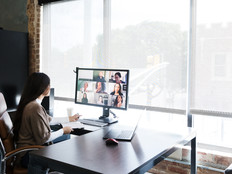StateStats: March 2005
Reports show that U.S. organizations leased approximately $220 billion in equipment last year, Wi-Fi locations topped 20,000 and adult usage of the Internet continues to reach new heights. The Reader Spotlight features Meg Brown of the Digital Divide Council, a consortium that is spreading access to technology throughout Florida.
EQUIPMENT LEASING
In 2004, organizations were expected to lease $220 BILLION in equipment. Approximately $26 BILLION will involve computers, software and other IT equipment, according to the Equipment Leasing Association (ELA) based in Arlington, Va.
In 2002, leasing of computers amounted to $15.5 BILLION, and software came in at $3.8 BILLION. Other IT equipment accounted for $4.5 BILLION in leasing, according to a study done for the ELA.
INTERNET USE INCREASES
In 2004, 63 percent of American adults used computers to access the Internet, the highest percentage ever recorded, according to the Pew Internet & American Life Project in Washington, D.C. The national phone survey included interviews with 2,200 adults.
All Adults: 63%
Rural Adults: 56%
Urban Adults: 62%
Suburban Adults: 68%
Source: Pew Internet & American Life Project
WI-FI NATION
Number of Wi-Fi locations in the United States (in 3/05):
24,265
U.S. cities with the most Wi-Fi locations:
New York (852)
Chicago (416)
San Francisco (382)
States with the most Wi-Fi locations:
California (4,144)
Texas (1,755)
New York (1,706)
States with the fewest Wi-Fi locations:
North Dakota (24)
Delaware (36)
South Dakota (37)
Source: JiWire
READER SPOTLIGHT
MEG BROWN
PROGRAM DIRECTOR
DIGITAL DIVIDE COUNCIL
TALLAHASSEE, FLA.
Meg Brown is building a web. It’s not an online web, but rather a web of in-the-flesh people. As the program director for the Tallahassee-based Digital Divide Council, Brown’s web consists of Florida officials and dignitaries who are working together to spread access to technology—and, yes, to the World Wide Web—to communities throughout the state.
“Our lives are centered around computers these days,” Brown points out. “People who don’t know how to use computers are not getting the services they need.”
The Digital Divide Council, created by Gov. Jeb Bush and the state legislature in 2001, is comprised of representatives from Florida’s Department of Education; community colleges; ITFlorida.com; Workforce Florida; the Florida Office of Tourism, Trade and Economic Development; the agency for Workforce Innovation; industry representatives; and state senators and representatives. The council chairwoman is Lyn Stanfield, a manager at Apple Computer, and its vice chairwoman is Florida CIO Simone Marstiller.
Such diverse representation, Brown believes, is at the heart of the council’s success. Its members use their resources to build community partnerships around the six pilot technology centers the council has established in Gainesville, Miami, Orlando, Tallahassee, Tampa and West Palm Beach. The centers provide communities with access to technology and training.
The idea, according to Brown, was for the centers to partner with complementary groups in order to share their resources—equipment, training programs, software, support staff and facilities—so that, over time, they could be self-sufficient. “These centers have to be sustainable,” she says. “You can’t just give them equipment and leave them alone.”
Some partnerships have already formed. For instance, one center has partnered with its local school district so that its notebook PCs could be used by the community, as well as in the schools. Other centers were established in community centers or faith-based organizations, which provided them with facilities and helped spread the word to citizens by starting with the various organizations’ existing memberships.
Besides establishing the technology centers, the council functions as a clearinghouse for equipment donations and needs. It also provides visitors to its Web site (www.digitaldividecouncil.org) with community lists of libraries and non-profit groups that make computers available for public use.
“There’s no shortage of needs,” Brown says. “I think word has gotten out about our being an information clearinghouse.”






